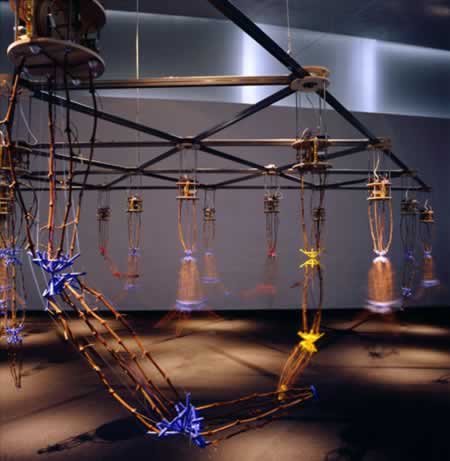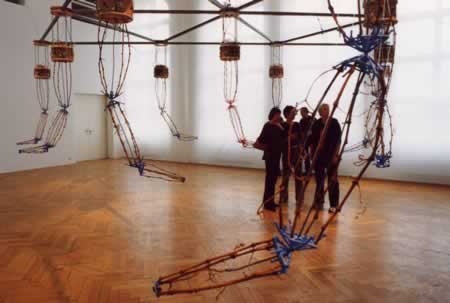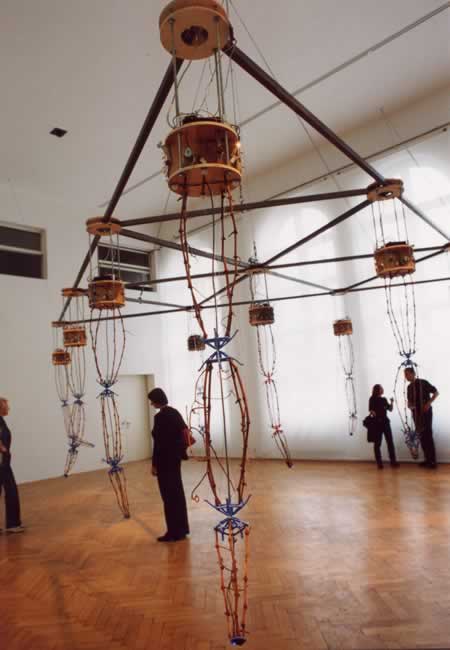I thought after a week mainly showing some robotics based projects, I'd post a little about one of my favourite pieces of work by one of my favourite artists, Ken Rinaldo.

Autopoesis 2000
Video
Ken Rinaldo is an artist and theorist who creates interactive multimedia installations that blur the boundaries between the organic and inorganic. He has been working at the intersection of art and biology for over two decades working in the catagories of interactive robotics, biological art, artificial life, interspecies communication, rapid prototyping and digital imaging. Rinaldo teaches interactive robotic sculpture, digital imaging, multimedia and Directs the Art and Technology program in the Department of Art at The Ohio State University in Columbus Ohio.

It consists of fifteen robotic sound sculptures that interact with the public and modify their behaviors over time. These behaviors change based on feedback from infrared sensors, the presence of the participant/viewers in the exhibition and the communication between each separate sculpture. This series of robotic sculptures talk with each other through a computer network and audible telephone tones, which are a musical language for the group. Autopoiesis is "self making", a characteristic of all living systems which was defined and refined by Francisco Varella and Humberto Maturana. The interactivity engages the viewer/participant who in turn, effects the system's evolution and emergence. This creates a system evolution as well as an overall group sculptural aesthetic.

In Autopoiesis the robotic sensors compare their sensor data through a central-state controller, so the viewer is able to walk through the sculptural installation and have the arms interact both individually and as a group. Because each arm has its own on-board computer control, the overall speed of reaction is rapid and therefore, life-like. Local control always supercedes group control when a local sensor is aware of a human nearby. This also allows individual arms to show accuracy and delicacy of approach and avoidance when encountering the viewer/participant. At the tip of two of the arms, lipstick cameras project what they see onto the walls of the space. This gives the viewer/participant a sense of being observed by this artificial life robotic sculpture.
Also see Regine from wmmna's recent interview with Ken Rinaldo
I'll put some more of Kens more recent work up soon
Originally posted on Interactive Architecture dot Org by Rhizome



